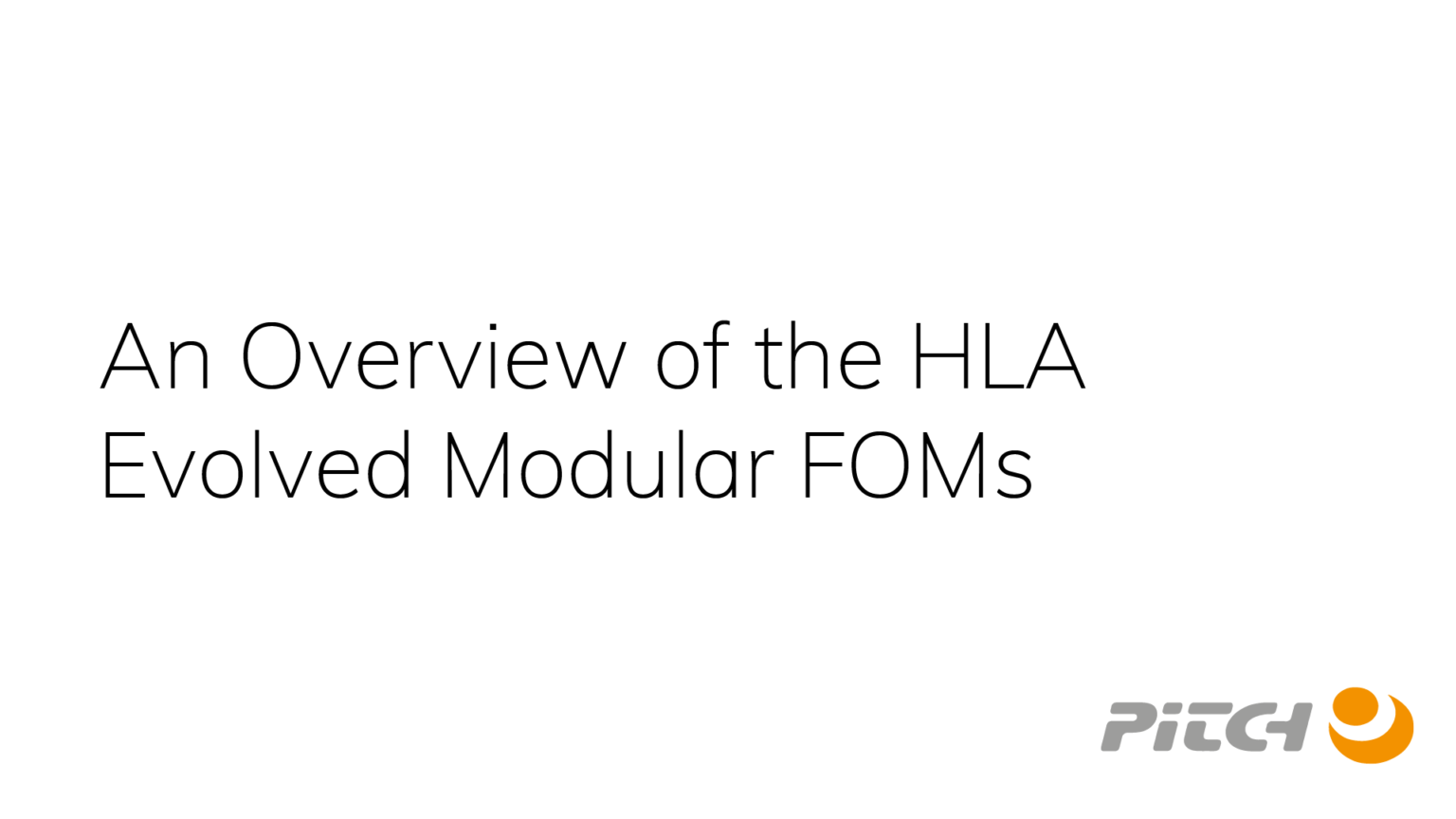ABSTRACT: The HLA Federation Object Model (FOM) describes the information that is to be exchanged during the execution of a federation. When the federation execution is created, the RTI loads the FOM. This enables the participating federates to refer to the object model, for example when publishing and subscribing to information.
As in many other cases, a monolithic architecture restricts the speed, flexibility, and accuracy of the development process which in turn affects the resulting FOM. As part of HLA Evolved the concept of FOM modules have been added. The FOM is thus broken down into composable modules that can build upon each other. This allows a subset of federates to specify what data they need to exchange upon joining, in addition to the initially loaded FOM.
The main advantage is the increased flexibility during runtime and, not the least, during the development process. Federation developers can build new modules that extend reference FOMs without modifying them. Reference FOMs can be developed by several smaller communities in different domains or for different local or national extensions. Temporary additions will not result in a multitude of similar FOMs.
It will also now be possible to have long-running or persistent federations in virtual arenas where new capabilities and types of shared information can be added over time.
The modular FOMs are expected to revitalize a long needed development of shared information models. This is an important and necessary next step towards even higher degrees of interoperability that build on top of the High Level Architecture.
Authors: Björn Möller, Björn Löfstrand, Mikael Karlsson
Publication: Proceedings of 2007 Spring Simulation Interoperability Workshop, 07S-SIW-108, Simulation Interoperability Standards Organization, March 2007.

